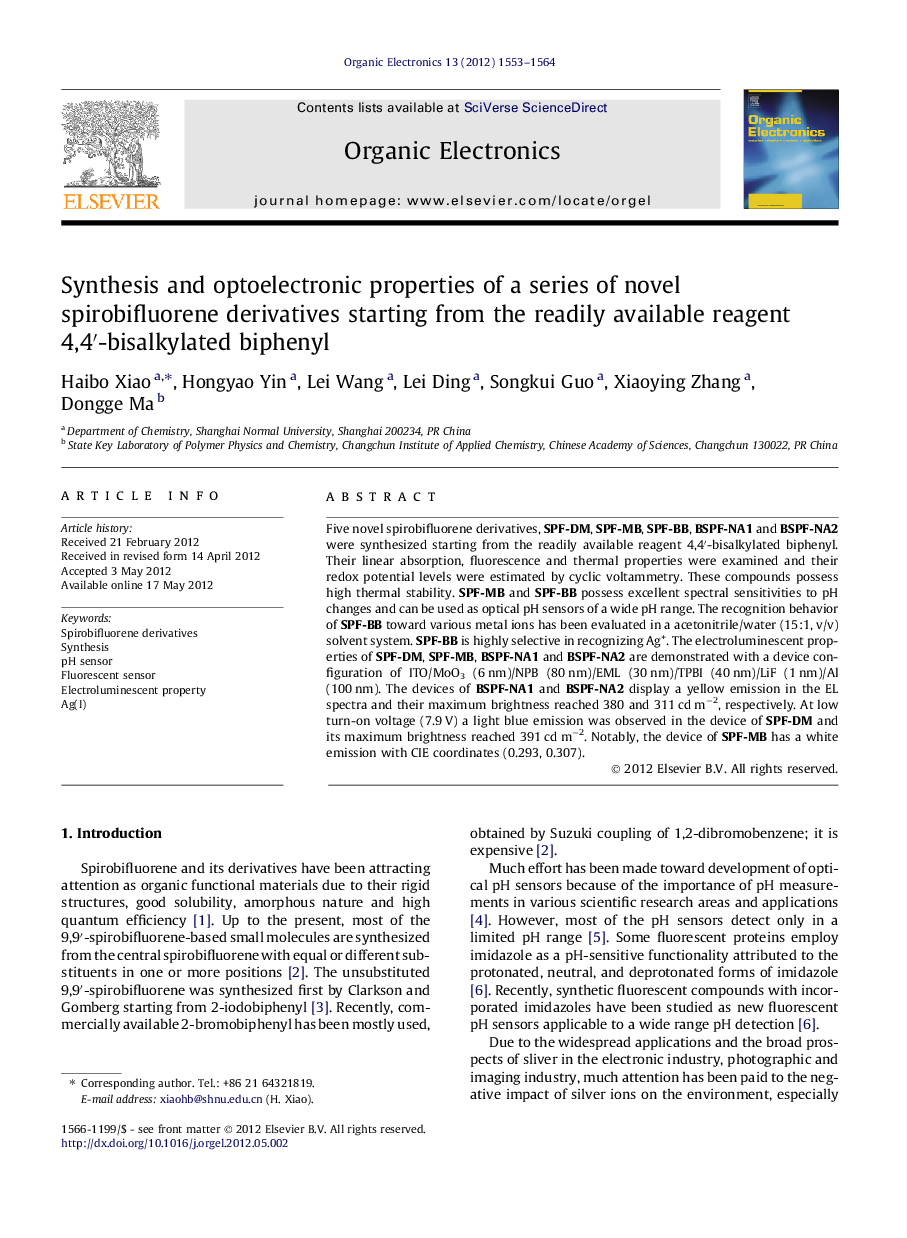| Article ID | Journal | Published Year | Pages | File Type |
|---|---|---|---|---|
| 1264551 | Organic Electronics | 2012 | 12 Pages |
Five novel spirobifluorene derivatives, SPF-DM, SPF-MB, SPF-BB, BSPF-NA1 and BSPF-NA2 were synthesized starting from the readily available reagent 4,4′-bisalkylated biphenyl. Their linear absorption, fluorescence and thermal properties were examined and their redox potential levels were estimated by cyclic voltammetry. These compounds possess high thermal stability. SPF-MB and SPF-BB possess excellent spectral sensitivities to pH changes and can be used as optical pH sensors of a wide pH range. The recognition behavior of SPF-BB toward various metal ions has been evaluated in a acetonitrile/water (15:1, v/v) solvent system. SPF-BB is highly selective in recognizing Ag+. The electroluminescent properties of SPF-DM, SPF-MB, BSPF-NA1 and BSPF-NA2 are demonstrated with a device configuration of ITO/MoO3 (6 nm)/NPB (80 nm)/EML (30 nm)/TPBI (40 nm)/LiF (1 nm)/Al (100 nm). The devices of BSPF-NA1 and BSPF-NA2 display a yellow emission in the EL spectra and their maximum brightness reached 380 and 311 cd m−2, respectively. At low turn-on voltage (7.9 V) a light blue emission was observed in the device of SPF-DM and its maximum brightness reached 391 cd m−2. Notably, the device of SPF-MB has a white emission with CIE coordinates (0.293, 0.307).
Graphical abstractFigure optionsDownload full-size imageDownload as PowerPoint slideHighlights► Novel spirobifluorene derivatives were synthesized starting from the readily available reagent 4,4′-bisalkylated biphenyl. ► These compounds possess high thermal stability. ► SPF-MB and SPF-BB can be used as optical pH sensors of a wide pH range. ► SPF-BB is highly selective in recognizing Ag+. ► Organic light emitting diodes were fabricated by using these compounds as the emitting layer.
